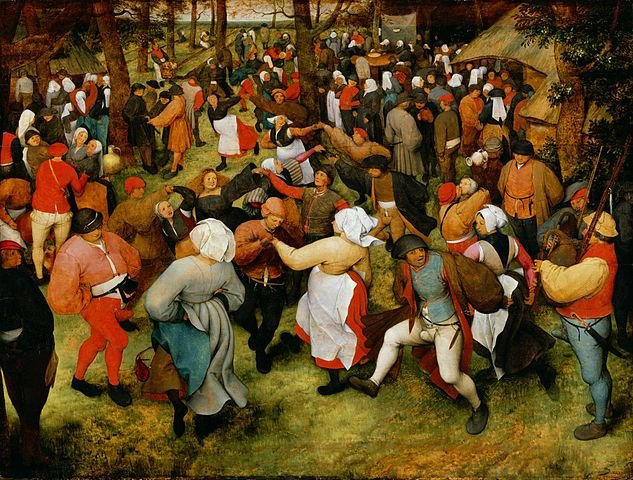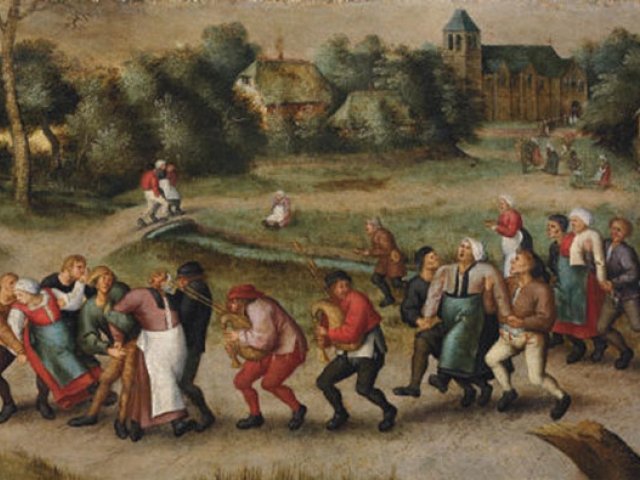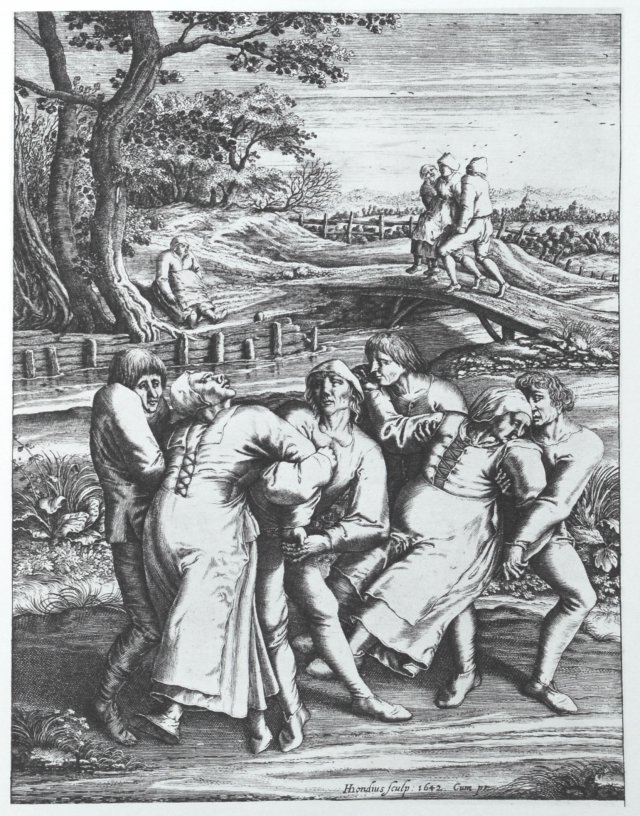Unexplained Phenomenon Of The Dancing Mania That Occurred During The Middle Ages
Ellen Lloyd – AncientPages.com - We live in a world full of mysteries. We often come across intriguing stories dealing with unexplained phenomena that make us even more curious about the realms we inhabit.
One such baffling event took place during the Medieval period in Europe.
In July of 1374 in Aachen, Germany, dozens of villages along the Rhine River were suddenly swept by a dancing plague called choreomania. For no apparent reason, hundreds of people took to the streets, leaping, jerking, and hopping to music.
The strange thing was that no-one else could hear the music except those who danced. How was it possible?
Another odd aspect of this story is that these people didn't want to stop dancing.
They did eat, drink or sleep. All they did was dance, shout, and hallucinate for days.
Sometimes, even when they fell, they continued to dance while on the ground. Obviously, they couldn't control their movements until finally, their weakened bodies collapsed from exhaustion.
This outbreak of dancing mania spread as far as France and lasted for several years. Almost just as suddenly as it had come, it disappeared.
This would be the end of this story, but something similar occurred in Strasbourg, France, back in 1518. A woman named Frau Troffea suddenly started to dance nonstop for days. Within a week, she was joined by 34 people and by the end of the month, the dancing plague had affected an estimated 400 people. Once again, people "danced themselves to death" for no obvious reason.
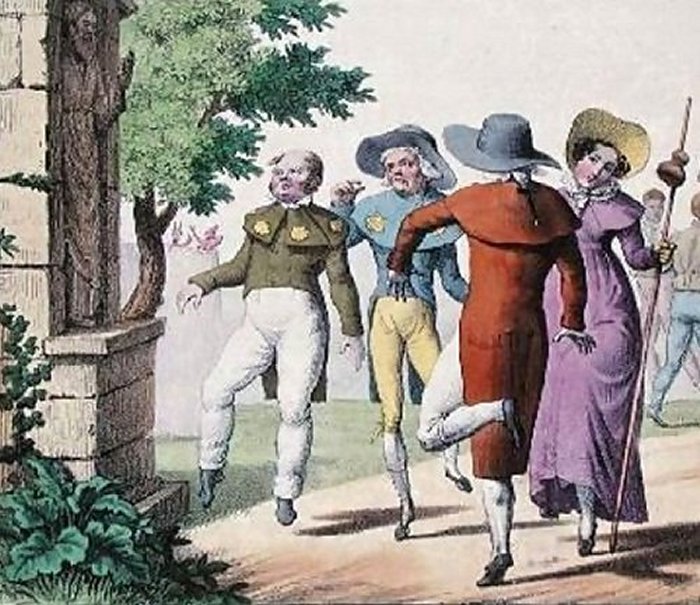
Dancing mania, also sometimes known as St. Vitus' dance, was first recorded in the 7th century and reappeared many times across Europe until about the 17th century.
It remains unknown what exactly caused the outbreaks of dancing mania. Some scientists have suggested the cause was mass hysteria. Other researchers explain this odd behavior as a mass psychogenic illness, which is a form of mass hysteria. This happens when a group of people mistakenly believe that they are afflicted with a common disease. Yet another possible explanation is ergot poisoning. Ergotism is contracted from a fungus that can grow on many grains, such as corn and rye. The symptoms of ergotism are very similar to those of dancing mania. It is possible that this fungus-infected food supplies of the afflicted areas.
Historian John Waller, author of the book "A Time to Dance, A Time to Die: The Extraordinary Story of the Dancing Plague of 1518," studied the illness at length and has solved the mystery. "That the event took place is undisputed," said Waller, a Michigan State University professor who has also authored a paper on the topic, which has been accepted for publication in the journal Endeavour.
Waller explained that historical records documenting the dancing deaths, such as physician notes, cathedral sermons, local and regional chronicles, and even notes issued by the Strasbourg city council during the height of the boogying rage, all "are unambiguous on the fact that (victims) danced."
"These people were not just trembling, shaking or convulsing; although they were entranced, their arms and legs were moving as if they were purposefully dancing," he said.
Waller suggested that stress-induced psychosis was behind the dancing mania that struck Medieval Europe. In those days, people suffered from famine, and many died of starvation. The area was riddled with diseases, including smallpox and syphilis. Waller believes the stress was intolerable, and hence a mass psychological illness resulted.
Waller also points out that superstition was widespread among the people. "Anxiety and false fears gripped the region," Waller said.
One of these fears, originating from a Christian church legend, was that if anyone provoked the wrath of Saint Vitus, a Sicilian martyred in 303 A.D., he would send down plagues of compulsive dancing.
The school was forced to shut down after more than half the students - 95 out of 159, were affected. Ten days after the school was closed, the plague struck a village 55 miles away and affected 217 for two months. The epidemic also spread through the countryside.
Such epidemics occurred in ancient times and can still happen today. As we have seen, there are several theories attempting to solve these mysterious outbreaks. Scientists may never be able to figure out precisely what caused the dancing mania outbreaks in medieval Europe.
The laughing epidemic in Tanzania requires further study and could solve the mystery of medieval dancing mania. Scientists believe that "in order to interpret this behavior as normal or pathological, a study of the cultural context should be made."
Again, perhaps we shouldn't compare ancient and modern outbreaks because they can have entirely different causes. In any case, despite the proposed theories, it appears that the Medieval Dancing Mania will remain an unexplained phenomenon that we will never be able to understand truly.
Written by - Ellen Lloyd – AncientPages.com
Copyright © AncientPages.com All rights reserved. This material may not be published, broadcast, rewritten or redistributed in whole or part without the express written permission of AncientPages.com
More From Ancient Pages
-
 Mythical Kingdom Of Prester John – Did It Exist?
Featured Stories | Mar 21, 2016
Mythical Kingdom Of Prester John – Did It Exist?
Featured Stories | Mar 21, 2016 -
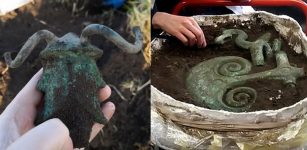 Mysterious Kallerup’s Double-Headed Figurine – Evidence Of Unknown Norse God Or Worship Of Roman God Janus In Ancient Scandinavia?
Artifacts | Mar 19, 2020
Mysterious Kallerup’s Double-Headed Figurine – Evidence Of Unknown Norse God Or Worship Of Roman God Janus In Ancient Scandinavia?
Artifacts | Mar 19, 2020 -
 Controversial Hollow Earth Theory – Scientific Facts Presented By Researchers – Part 1
Ancient Mysteries | Jun 21, 2019
Controversial Hollow Earth Theory – Scientific Facts Presented By Researchers – Part 1
Ancient Mysteries | Jun 21, 2019 -
 Mystery Of The Sandby Borg Massacre Deepens – Unexplained Disappearance Of Women
Featured Stories | Dec 5, 2020
Mystery Of The Sandby Borg Massacre Deepens – Unexplained Disappearance Of Women
Featured Stories | Dec 5, 2020 -
 Årsgång – Year Walk In The Forest – Mystical Journey To Gain Knowledge About The Future – An Ancient Swedish Ritual
Ancient Traditions And Customs | Jan 1, 2025
Årsgång – Year Walk In The Forest – Mystical Journey To Gain Knowledge About The Future – An Ancient Swedish Ritual
Ancient Traditions And Customs | Jan 1, 2025 -
 Mysterious Ancient Tomb Reveals ‘Impossible’ Cosmic Connection – Wrong Identity – Part 1
Ancient Mysteries | Oct 11, 2020
Mysterious Ancient Tomb Reveals ‘Impossible’ Cosmic Connection – Wrong Identity – Part 1
Ancient Mysteries | Oct 11, 2020 -
 Elizabeth Woodville: Mother Of The Princes In The Tower And Commoner Queen
Featured Stories | Jul 16, 2018
Elizabeth Woodville: Mother Of The Princes In The Tower And Commoner Queen
Featured Stories | Jul 16, 2018 -
 Njord: Norse God Of The Seas And Seafarers And His Unhappy Marriage To Skadi
Featured Stories | Jul 10, 2018
Njord: Norse God Of The Seas And Seafarers And His Unhappy Marriage To Skadi
Featured Stories | Jul 10, 2018 -
 Trentren And Caicai: The Battling Serpents Of Chilote Mythology
Featured Stories | Jul 10, 2022
Trentren And Caicai: The Battling Serpents Of Chilote Mythology
Featured Stories | Jul 10, 2022 -
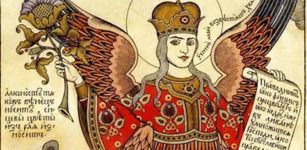 Alkonost – Mythical Bird Of Paradise In Slavic And Russian Folklore
Featured Stories | Jul 6, 2020
Alkonost – Mythical Bird Of Paradise In Slavic And Russian Folklore
Featured Stories | Jul 6, 2020 -
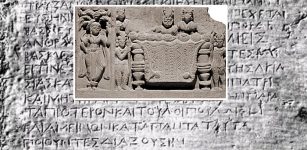 Robots Guarded Buddha’s Relics In Ancient India – Legend Tells
Featured Stories | Jun 28, 2019
Robots Guarded Buddha’s Relics In Ancient India – Legend Tells
Featured Stories | Jun 28, 2019 -
 Jackalope – Are Mythical Horned Hares Real?
Featured Stories | Mar 11, 2019
Jackalope – Are Mythical Horned Hares Real?
Featured Stories | Mar 11, 2019 -
 Sweden’s Blue Maiden ‘Blåkulla’ Island – Mythical Place With Dark Secrets Of Witches And Wizardry
Places | Sep 23, 2015
Sweden’s Blue Maiden ‘Blåkulla’ Island – Mythical Place With Dark Secrets Of Witches And Wizardry
Places | Sep 23, 2015 -
 Amazing Thirteen Ming Tombs: Gigantic Stone Animals And Human Figures Were Symbols Of Royal Power
Civilizations | Oct 1, 2018
Amazing Thirteen Ming Tombs: Gigantic Stone Animals And Human Figures Were Symbols Of Royal Power
Civilizations | Oct 1, 2018 -
 Lemminkainen: Mythical War-Hero Of Finnish Great Epic ‘Kalevala’
Featured Stories | Oct 14, 2016
Lemminkainen: Mythical War-Hero Of Finnish Great Epic ‘Kalevala’
Featured Stories | Oct 14, 2016 -
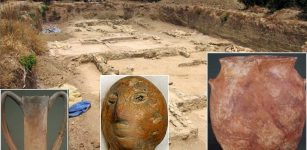 Legendary Helike – Uncovering Lost City of Poseidon
Civilizations | Dec 19, 2018
Legendary Helike – Uncovering Lost City of Poseidon
Civilizations | Dec 19, 2018 -
 Return Of Pahana – The Lost White Brother Of The Hopi And The Sacred Tablet
Myths & Legends | Mar 5, 2018
Return Of Pahana – The Lost White Brother Of The Hopi And The Sacred Tablet
Myths & Legends | Mar 5, 2018 -
 Puzzling Sakwala Chakraya Carving Could Be World’s Oldest Map Of The Universe – Mystery Of Sri Lanka’s Stargate
Featured Stories | May 15, 2021
Puzzling Sakwala Chakraya Carving Could Be World’s Oldest Map Of The Universe – Mystery Of Sri Lanka’s Stargate
Featured Stories | May 15, 2021 -
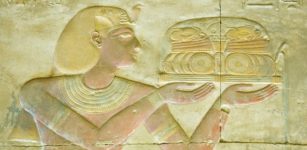 Table Manners And First Code Of Correct Behavior Were Introduced In Egypt 2,500 B.C. By Ptahhotep
Ancient History Facts | Oct 26, 2020
Table Manners And First Code Of Correct Behavior Were Introduced In Egypt 2,500 B.C. By Ptahhotep
Ancient History Facts | Oct 26, 2020 -
 Lost Kingdom Of Cleopatra – Legendary Lost City Of Heracleion
Featured Stories | Apr 1, 2014
Lost Kingdom Of Cleopatra – Legendary Lost City Of Heracleion
Featured Stories | Apr 1, 2014

